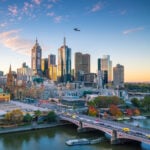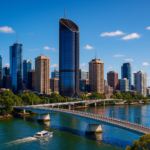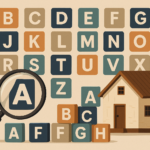
Key takeaways
Despite significant property price growth across Australia, some Queensland suburbs have seen property values stagnate or even decline over the past decade.
Low or stagnant prices don’t automatically indicate investment opportunities—often these suburbs remain cheap due to underlying structural weaknesses (e.g., limited economic drivers, poor infrastructure).
Long-term property investment success comes from understanding demand fundamentals and market dynamics—not just chasing low prices.
Imagine stepping into a time machine and heading back to 2015.
Petrol was just $1.20 a litre, a decent coffee cost $4, and you could fill a trolley at the supermarket without flinching.
Fast-forward to today and, while inflation has taken a noticeable bite out of our daily budgets, there are still some parts of Queensland’s property market that look like they’ve missed the last decade entirely.
New data from PropTrack reveals a surprising twist: in 16 Queensland suburbs, property prices are now cheaper than they were in 2015.
And in another 125 suburbs, they’ve risen by $150,000 or less, a modest increase in the context of the significant price growth we’ve seen in other parts of Australia over the past ten years.
Now, let’s not pretend this is the norm.
In much of Brisbane and across the state, property values have risen sharply since 2015, driven by population growth, infrastructure upgrades, and lifestyle migration.
But these outliers are worth examining, not necessarily as hot investment spots, but as a lesson in market dynamics and the long-term importance of supply and demand fundamentals.

Brisbane’s affordable pockets: a decade of little change
In Greater Brisbane, the suburb of Brassall in Ipswich stands out as the only one where property prices have actually dropped over the past decade.
Units here now have a median price of $160,654.
That’s cheaper than a new dual-cab ute and far below the city’s average.
And even in some of the more inner-city suburbs, Bowen Hills, Milton, and Fortitude Valley, median unit prices have crept up by less than $50,000 in ten years.
These are areas that were once flooded with investor-targeted apartments, and while that oversupply kept prices flat for a while, that’s unlikely to be the story moving forward.
Why?
Because, as PropTrack economist Anne Flaherty rightly points out, the economics of apartment development have fundamentally changed.
Construction costs are soaring, and developers aren’t rushing to build affordable units anymore.
Most new builds are targeting the premium end of the market, often priced north of $1 million.
So, the surplus we saw a decade ago is now turning into a scarcity, particularly for affordable apartment stock.
House prices holding steady in Logan’s Park Ridge
Interestingly, one of the only suburbs in Greater Brisbane where house prices have remained relatively stable is Park Ridge, in Logan.
Ten years ago, this was predominantly an acreage suburb.
Today, it’s transformed into a hub of new housing estates on smaller lots.
The median house price in Park Ridge is now $753,500—up only $133,500 from 2015.
That's moderate growth compared to the broader Brisbane market.
Why the stability?
It's partly due to the change in housing types.
Developers have subdivided the larger blocks into smaller parcels, introducing more affordable housing options and diversifying the demographic base.
In other words, supply met demand, and in doing so, kept a lid on runaway price growth.
Beyond Brisbane: where prices have actually fallen
And it’s not just Brisbane.
Across regional Queensland, there are suburbs where prices have gone backwards:
-
East Mackay units: down $155,000
-
South Townsville units: down $125,000
-
Gladstone Central units: down $125,000
-
Sunset (Mt Isa) houses: down $102,000
-
Happy Valley and Townview: also showing declines
These areas tell a different story.
One of oversupply, economic volatility, and limited demand drivers.
They serve as a reminder that not all markets rise equally or sustainably.
Many of these regions are heavily reliant on single industries (like mining), and without diversification, their property markets remain vulnerable to downturns.

The bigger picture: what this means for investors
So what should investors take from this?
Well, first, don’t assume past performance equals future potential.
Some of these areas may look cheap, but they could stay that way for a long time unless significant demand-side factors shift.
Second, these examples underscore the importance of supply-side constraints in driving long-term capital growth.
When you flood a market with uniform dwellings—like we saw in inner Brisbane’s apartment belt or Gladstone during the mining boom—the lack of scarcity hampers price growth.
Third, with affordability becoming a growing issue in our major capital cities, these "forgotten" suburbs might see renewed interest in the years ahead, particularly if infrastructure improves or migration patterns shift again.
But any potential upside would depend on more than just price.
Investors should look closely at employment drivers, demographic trends, and infrastructure pipelines before jumping in.
Final thoughts
While it's interesting to see that you can still buy property in some Queensland suburbs at near-2015 prices, that doesn’t automatically make them a good investment.
As I always say, these markets are often cheap for a reason.
That said, in a country facing a chronic housing shortage, and with construction economics now favouring high-end development, the pendulum is likely to swing back toward undersupplied, more affordable stock.
And the best opportunities will go to those who understand where demand is heading, not just where prices have been.














